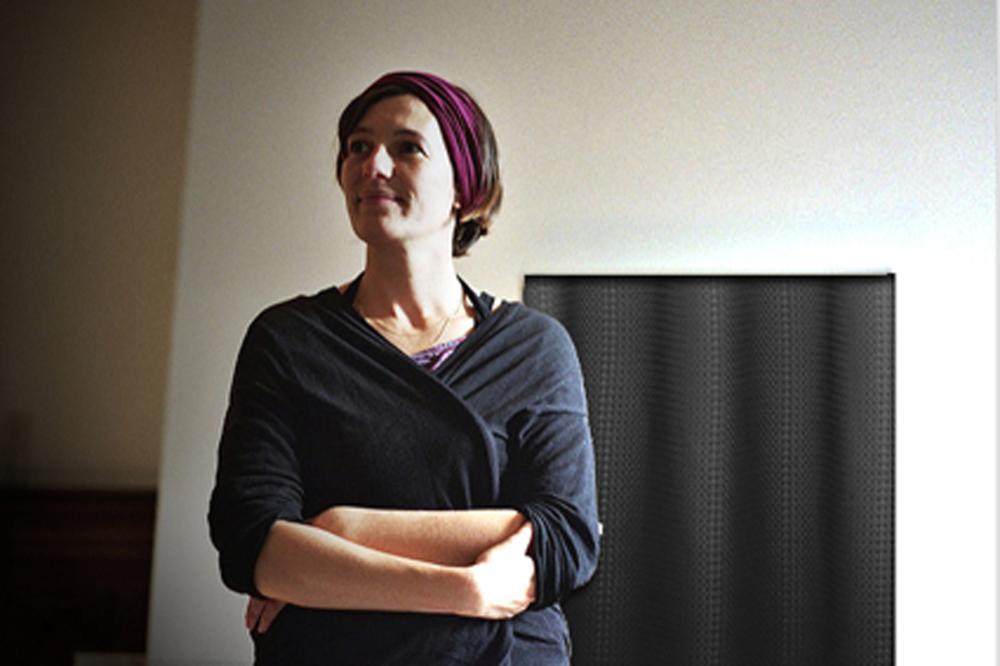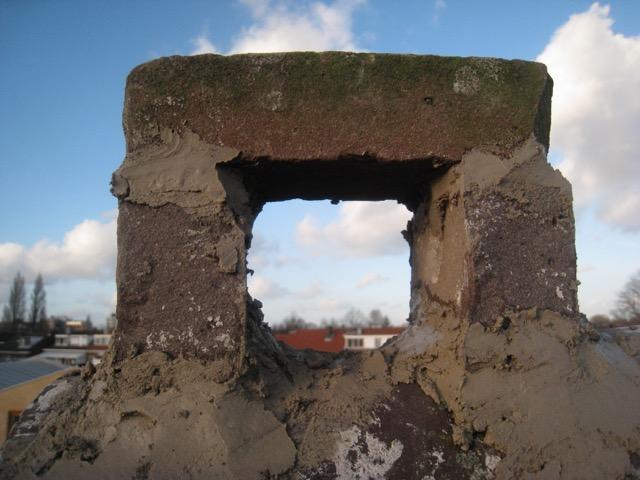‘Today is a Wonderful Day to Die’
Barbara Raes on farewell rituals and life’s little funerals
Barbara Raes was the programme director and artistic director at the BUDA and Vooruit Arts Centres until she went in a completely different direction in 2014. She currently conducts research at the KASK and she has founded Beyond The Spoken, a workspace for unrecognized loss. She creates farewell rituals and helps people to make time to process transitional moments in their lives. Her old love for art is never far away, however, and it has also been given a place within her practice. This autumn, she is not only participating in the Europalia exhibition Ancestors and Rituals at BOZAR, but she is also coming to the Kaaistudios for the focus programme Our Daily Death, which is part of our seasonal theme RE:RITE.
You took a course in leading funeral rituals. Where did you get this strange idea and what is the content of such a course?
I discovered farewell rituals in the same year that I was saying goodbye to my old professional life. In that transitional period, I consciously sought out emptiness, silence, and ‘doing nothing’, and I intentionally took a course that was outside my own field. At Totnes, I signed up for course on leading farewell rituals in cases of bereavement. Due to the unusual funeral legislation in the United Kingdom, funerals don’t necessarily have to take place in a graveyard or a crematorium. Consequently, as a ritual counsellor, you have to be prepared for all different kinds of situations, which influenced my decision to take the course in England.
The course started with facing your own death: watching a body that is being cremated. What happens when somebody is given over to the flames? How long does it take? How does the body transform into ash? People who are confronted with death have numerous questions. To accompany them, you have to win their trust by showing them that you know what is going to happen, so that you can tell them that everything will be alright. Preparation is central to dealing with death. They more prepared you are, the more you know, and the better you can deal with it. That is why part of the course is a long period of simply looking: attending and analysing the funerals of strangers. This brought me back to my old life of watching artistic productions: how is the ceremony structured? Is the dramaturgical development effective and appropriate? Which details strike you?
The course was about much more than death. We also learned about the meaning, values, and norms to which you relate. By focusing on death, I realized that I just kept learning more about life and how to live life. When you lead rituals, you have to ensure that you do not impose your own values and norms on the bereaved. That is very difficult. We have a very strong tendency to foreground our own values and to say ‘look at it from a different perspective’. Everyone’s grief and everyone’s way of mourning is different, but they are all of equal value. By identifying your own values and norms, you can create a space for the other.
Beyond The Spoken is not really about funerals, but is focused on a different kind of loss.
When I went to take my exam as a counsellor, I wasn’t sure about what exactly I wanted to do. But then I was asked the following exam question: one of the two men in a homosexual couple is in palliative care. The couple would like to marry, but gay marriage has not yet been legalized in the United Kingdom. The ill man dies and gay marriage becomes legal a year later. Make a farewell ritual that commemorates the dead man in which you marry him to his former partner, in the presence of the partner’s new husband. That is when I realized what I wanted to do with this new training: I wanted to articulate an answer to these sorts of complex situations in our society, which occur far more often than you might think. We need new instruments to process these difficult situations.
The farewell rituals I make are for the little funerals in life: moments of loss and grief that go unrecognized but through which we must also grieve. Examples might include never becoming a biological mother, undergoing an operation, divorce, losing your job, or returning to work after parental leave. I make these rituals as co-creations with artists. I feel that many artists have a certain sensitivity for our profoundly human need for consolation and empathy, and are more adept at connecting to a more spiritual context. Art can free us from rational frameworks and connect us to the things that we feel but which we cannot adequately articulate. That is one of the things that I find so interesting about the RE:RITE programme at the Kaaitheater. The social institution of the ritual and that of the theatre used to be two separate things. It is an interesting exercise to combine these separate mental spheres with one another.
How are such farewell rituals structured?
Every farewell ritual is a transitional ritual: you say goodbye in one way so that you can transform into a new reality. These rituals consist of three stages that are part of all transitional rituals and which are necessary for a successful transitional ritual. All of the rituals that I make in Beyond The Spoken follow this pattern. The first part is separation, in which you accord a new status to the person for whom the ritual is being done: he or she temporarily becomes different from the rest. In the second stage, the liminal phase, the transition itself occurs. You are not yet in the last stage, but you are no longer who you were before. The community supports you through this transformation. The third stage is re-integration in the group. You receive a new social status and become part of the community anew. For example, in stage one you were a woman who has lost her husband, but by stage three you are a widow.
As the leader of farewell rituals, you must ensure that you cover all the stages of the ritual and that you maintain the right sort of energy throughout. From positive – creating the myth – through to creating a lively image of the person in question for the mourners, all the way down to rekilling the dead, showing that the dead person is really dead. The deepest point is when you commit the dead person’s body to the flames or to the earth, and then end positively again. The last part is the most difficult for counsellors because it focuses especially on consolation and hope. If the energy is higher than at the beginning, the ritual has a healing effect. But you have to go through the entire S-curve in order to end on a healing note.
Many people in Belgium received a religious upbringing, but no longer want a Christian funeral. Consequently, new rituals need to be devised. Is the impression that this is often not very successful correct?
There are many reasons why the creation of alternatives is not always equally satisfying. I have noticed that there is occasionally an excessively strong desire for positivity: ‘life should be a party’ and thus a funeral should primarily be about celebrating life. But I think that joy is not the only important element in saying goodbye. This underestimates the meaning of rituals and their effects. It is wrong that we no longer want or dare to name and process loss. You have to go through this transition.
Over the past few decades, we have distanced ourselves from Christian frameworks and thus individualized and deritualized Western society. We create our own meaning through our personal experiences and knowledge. The frameworks we used to share have also become individualized. But even without these religious and faith-based structures, we remain people who seek consolation, understanding and forgiveness. We all experience guilt and remorse, but are no longer provided with ready answers to these feelings. Our search for a new and meaningful framework now emerges under the great umbrella of crises and periods of fear and uncertainty. It is not surprising that people nowadays experience a great need for the security of the kind of framework that religion used to provide. People who come to me are often far removed from themselves. Every day, they try very hard to be somebody other than who they really are. They are fragmented in emotional, spiritual, psychological and relational ways. And every day, they have to glue themselves back together to go on.
Is this individualization the danger of our current society?
That is the paradox of my practice. I start from individuals who come to me with specific questions in a specific context of a specific loss. I create something unique for that person. But my motivation is actually the opposite of increasing individualization, namely the current lack of community-building and extreme privatization of sadness. The collective is extremely important to guide somebody through a process. Early on in that process, I ask people to invite others to their rituals. They are often taken aback because they think that they can simply conduct the ritual with me. People do not want to involve others in their sadness, they prefer to go through it completely alone. The idea that they might have to ask others to take a whole day off especially for them is very difficult. The rhythm of a ritual does not match the rhythm of our times. That is in part because rituals date from a time in which the pace of life was much slower.
How do you involve art in your rituals?
Artists are the portrayers of transformation. During the second conversation, I ask my clients to bring objects that are related to whatever they are saying goodbye to. Visual artists help me to explore how an object can be transformed and adopt a different role. By transforming not only the person but also a related object, the process becomes lighter and more comprehensible. For example, I once made a ritual for a woman who had undergone a double mastectomy. I asked Naomi Kerkhove, an artists who makes beautiful objects with her sewing machine, to sew a text onto white linen. At the end of the ritual, the embroidered fabric was hung around the woman’s shoulder like a kind of pageant ribbon. After her operation, the woman had rolled up the ribbon and put it on her hospital cupboard like a bandage. In that moment, it symbolized her wounded period. When I later visited her at home for a follow-up conversation, the ribbon was displayed on the wall as an artwork. Just like herself, the ribbon’s meaning had been transformed.
In this sense, rituals are artistic, but they are not art as such. They are theatrical, but they are not theatre. They aren’t parodies because authenticity is extremely important, you must also be in touch with yourself very closely during a ritual. That is how rituals have a therapeutic effect without being therapy as such. Rituals combine many different disciplines. In my project OPEN ENDING at the KASK, for example, I combine various disciplines to explore the role of space and architecture during rituals.
Where does our urge and eternal search for meaning come from?
‘Today is a wonderful day to die.’ These are the words of Uller Gscheidl, an alternative funeral director from Berlin. There are only two days in life in which you can do nothing: yesterday and tomorrow. And therefore, there is only today. My work in Beyond The Spoken is a tribute to life and all the meaning that we can have and be in life. In other words, to live life.

